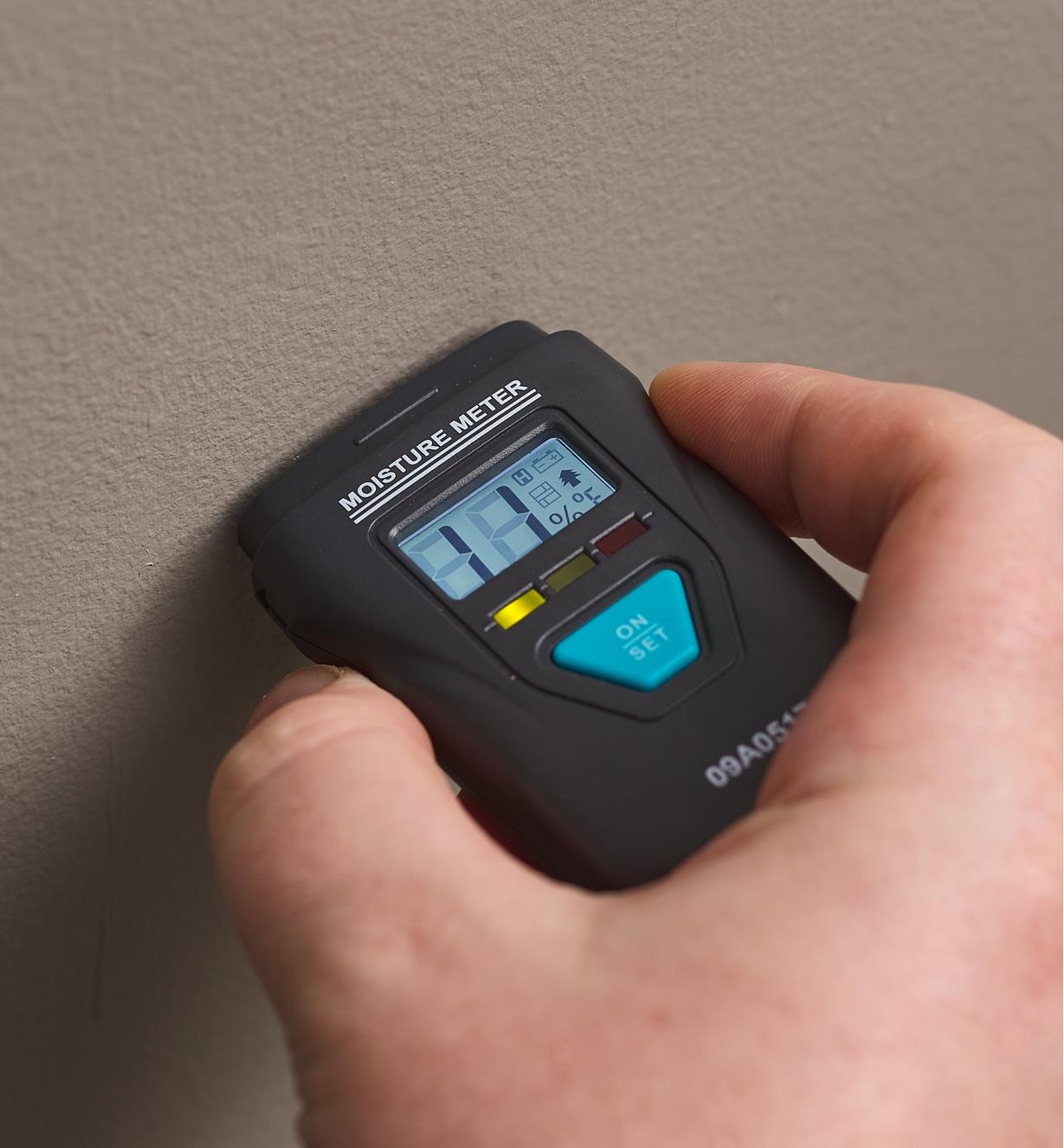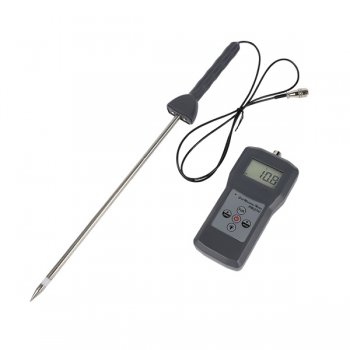Just How a Moisture Meter Can Boost Your Building And Construction Tasks and Prevent Damages
Just How a Moisture Meter Can Boost Your Building And Construction Tasks and Prevent Damages
Blog Article
Delve Into the World of Moisture Meters: Every Little Thing You Required to Know
In the realm of moisture meters lies a world of precision and practicality that commonly goes unnoticed. These tools, while seemingly uncomplicated, hold a wealth of details that can considerably impact different industries and applications. Understanding just how moisture meters operate, the different types readily available, and their varied usages can shed light on their importance in making certain high quality and performance. By discovering the complexities of wetness meters, one can reveal a valuable tool that transcends simple measurement, offering insights that can make a considerable difference in many areas.
Exactly How Moisture Meters Work
Moisture meters run by measuring the electric conductivity or capacitance of materials to identify the moisture material present. These meters are very useful devices across different industries, including woodworking, farming, and building. By using various techniques such as pinless or pin-type modern technology, dampness meters provide precise analyses that assist professionals make informed choices.
Pin-type moisture meters function by placing the sharp pins into the material being evaluated. The electric conductivity in between the pins is after that measured, with higher moisture degrees resulting in enhanced conductivity. Moisture Meter. On the other hand, pinless moisture meters utilize electro-magnetic signals to scan a bigger area without causing any type of damage to the material's surface area. These meters are perfect for rapidly examining dampness levels in big locations or finished products.
No matter the approach made use of, dampness meters play an essential function in preventing problems such as mold growth, structural damages, or item flaws caused by excess dampness. Comprehending just how these meters job is crucial for making sure the quality and stability of products in different applications.
Kinds Of Moisture Meters
Offered the important duty wetness meters play in numerous industries, it is essential to recognize the different types available to specialists for accurately examining dampness levels - Moisture Meter. There are mainly 2 main kinds of moisture meters: pin-type and pinless moisture meters

On the other hand, pinless wetness meters make use of electromagnetic sensing unit plates to scan a bigger location of the product without creating any type of damage. This type appropriates for swiftly scanning huge locations and is frequently made use of for floor covering, walls, and ceilings. Pinless meters are convenient for taking readings on completed surface areas without leaving any kind of visible marks.
Both kinds of wetness meters have their benefits and are selected based on the particular requirements of the task at hand. Comprehending the differences in between these types is essential for specialists to make precise moisture assessments.
Applications Throughout Industries
With diverse performances, moisture meters find widespread application across different markets, assisting specialists in making certain optimal conditions for materials and structures. In the farming industry, dampness meters are important for establishing the wetness material in grains, seeds, and hay, guaranteeing top quality control and avoiding mold and mildew growth. Building and construction experts count on moisture meters to assess the wetness degrees in structure materials like concrete, drywall, and timber, which is important for keeping architectural integrity and stopping issues like rot or mold and mildew. The flooring market utilizes wetness meters to determine the dampness web content in subfloors before installing numerous flooring, stopping expensive damages because of excess wetness. Moreover, in the food sector, moisture meters are made use of to monitor and control moisture degrees in items such as grains, nuts, and dried fruits to preserve freshness and quality. Furthermore, moisture meters play an essential role in the remediation and damage assessment sector by aiding experts recognize and resolve water damage in structures promptly. Across these diverse sectors, wetness meters are essential tools for ensuring the top quality, safety, and longevity of different products and items.
Tips for Utilizing Dampness Meters
Utilize the wetness meter's calibration setups to make sure accurate readings when determining the wetness content in various products. Calibration is critical for the proper performance of a wetness meter. Before each use, it is a good idea to examine and readjust the calibration settings according to the particular product being evaluated. Furthermore, ensure the meter is set to the correct dampness range for the product you are determining to acquire the most accurate results.
When making use of a pin-type wetness meter, place the pins to the ideal depth advised for the product being checked. This makes certain that the wetness analyses are taken from the appropriate deepness within the material, giving an extra exact representation of its wetness content. For pinless dampness meters, remember to maintain proper contact with the material's surface area to get reliable analyses.
On a regular basis examine and change the batteries in your wetness meter to prevent incorrect readings as a result of low power. Store the meter in try this web-site a dry and safe area when not in use to prolong its life-span and maintain its accuracy. By following these tips, you can optimize the performance of your dampness meter and get exact wetness content dimensions throughout different products.
Maintenance and Calibration
To ensure the precision of dampness content measurements, routine upkeep and calibration of the moisture meter are necessary actions in its proper functioning. Calibration readjusts the dampness meter to guarantee that it supplies reputable and regular outcomes.
Calibration ought to be done occasionally, specifically if the moisture meter is used frequently or in important applications where exact dimensions are called for. Many moisture meters come with calibration tools or can be calibrated by professional services. Moisture Meter. It is recommended to keep a log of calibration dates and results to track the efficiency of the dampness meter with time. By adjusting the dampness and keeping meter regularly, users can trust the precision of the dampness web content dimensions acquired.
Verdict

Finally, dampness meters play a vital role in numerous markets by properly determining the dampness material of products. Understanding exactly how these devices work, the various types readily available, and appropriate maintenance and calibration are necessary for acquiring dependable outcomes. Whether in agriculture, building and construction, or manufacturing, making use of dampness meters helps guarantee this content top quality control and performance in procedures.

In verdict, moisture meters play you could look here a crucial function in various markets by properly determining the dampness content of products.
Report this page